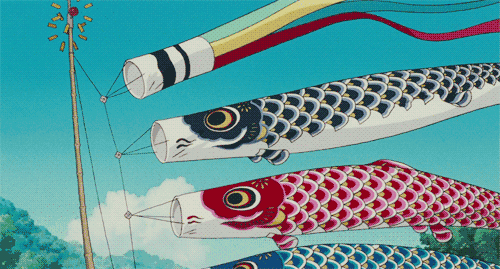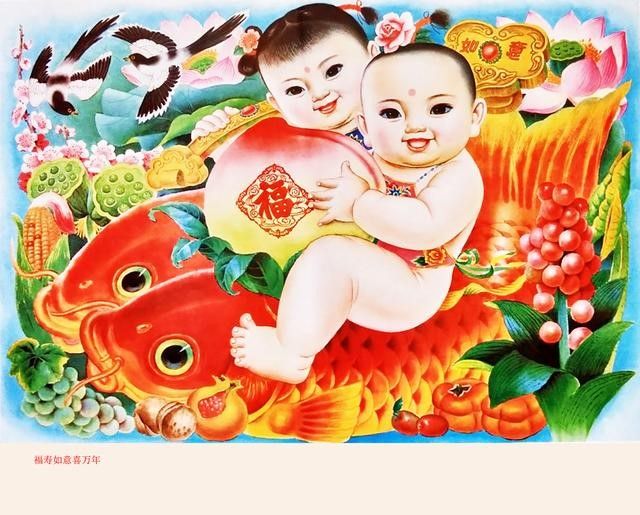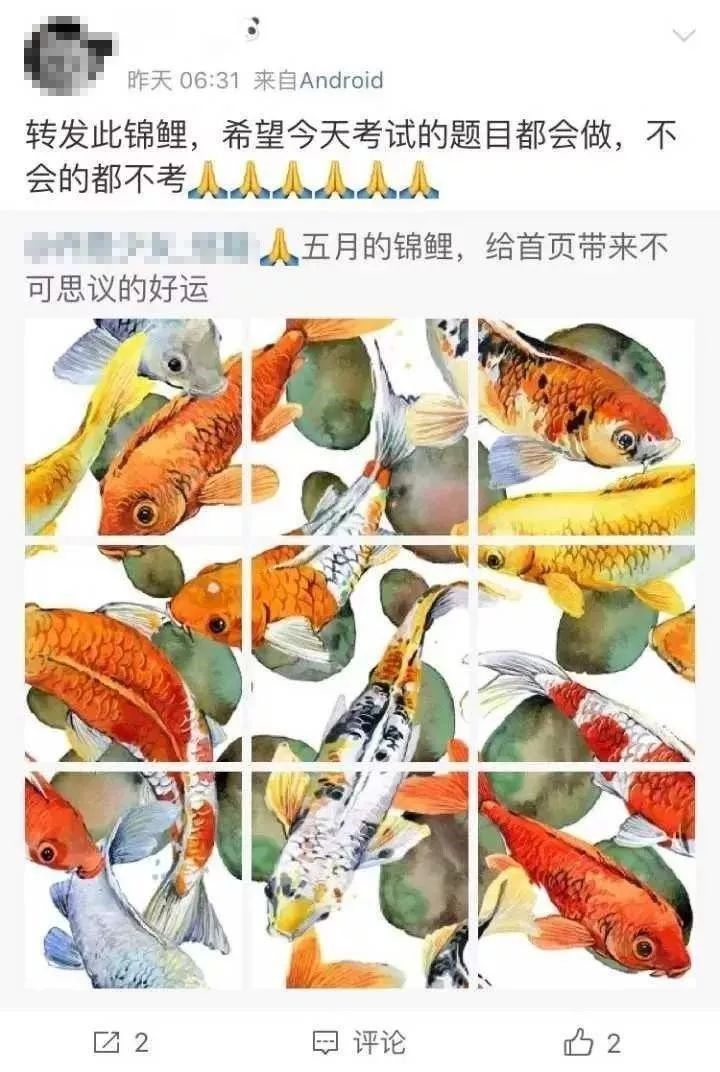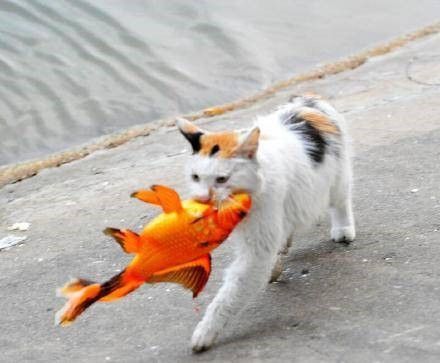The college entrance examination is over, it's time to engage in the world's largest electronic superstition
Not having a good time lately? Just forward a koi. Going well recently? Forwarding Koi may be smoother.
Or rotating planets, glowing cats, cute ducks, rare rainbows… Forwarding has the same effect: bad luck fades away, good luck comes. Generally, the forwarders will also laugh at themselves as "everyday superstition", but this kind of superstition is only different from zero times and countless times - once it is posted, it always needs to be posted again every ten days and a half months.
Among all the prayers belonging to "everyday superstition", koi are the "magic amulet" with the longest history, the highest reliability, and the widest acceptance. Even those who have good luck along the way will be named "Koi", such as Yang Chaoyue, the star who debuted from "Creation 101" a few years ago.
Where does koi come from, and why is its charm enduring? Many people look down on this "Internet carnival", but pay little attention to the large and real emotional needs attached to koi.
Koi Metamorphosis
Koi is a type of carp. In a biological sense, it originated in China. It is reported that in the 12th century BC, China began to farm carp. However, in the cultural sense, koi are completely "imported" from Japan, and have gradually become a symbol of Japanese local folk culture and even traditional national culture.
After carp was introduced to Japan, it was customary to breed carp in paddy fields in the mountains of the Chuetsu region of Niigata Prefecture. During the Edo period in the early 19th century, Niigata Prefecture not only had black carp, but also red carp and white carp, and their descendants produced more complex patterns. Ornamental carp gradually appeared.
At the Taisho Exposition in Tokyo in 1914, Niigata Prefecture exhibited "mutant carp" and won the silver medal at the exposition in one fell swoop. Even the then crown prince, Prince Hirohito (Emperor Showa), was also very interested. Since then, the reputation of Niigata Prefecture has become famous, and the people have been inspired to continue to improve the breeding technology and cultivate the "Taisho Sanshi" variety. These carp began to have the name "Koi".

The name "Koi" was popularized and fixed after World War II. In 1952, the carp farming institution in Niigata Prefecture was officially named "Niigata Prefecture Koi Aquaculture Fishery Association".
By the 1967s, koi had left Niigata Prefecture and headed for the whole of Japan. A national organization such as the "All Japan Koi Promotion Association" appeared, and the first All-Japan Comprehensive Koi Evaluation Conference was also held. Since then, koi have been called "national fish". It cannot be ignored that the politician Tanaka Kakuei's hometown is Niigata, and his cultural strategy of participating in the election has also boosted the popularity of Koi.
At the Osaka World Expo in 1970, a garden with Japanese characteristics appeared in the venue, and koi from Niigata, Osaka, and Hiroshima played in it, becoming an important part of the "beauty of Japanese style".
Soon, koi also went global like giant pandas. On the one hand, Japanese governments at all levels treat koi as a diplomatic gift. On the other hand, Japanese immigrants overseas have also begun to set up enthusiast groups to expand the influence of koi among the people.
With the increase of followers, the industrialization of koi has developed. Koi breeding technology relies not only on systematic mating, but also on individual selection, and science and experience are indispensable. Even koi breeding technology training has become a popular course, and many foreigners have traveled across the ocean to learn the art.
There are more varieties, and appreciation is also on the agenda. The appreciation, tasting and evaluation of koi have their own systems. It is reported that there are more than 100 kinds of koi with Japanese terminology, and the criteria for judging body shape, color and pattern are often determined by Japan.
Symbolism, farming, and appreciation together make up Japan's koi culture. In the Tokyo Olympics held last year, the equestrian qualifiers set up quite Japanese obstacles such as Dharma, koi, kimono, and drums. These familiar "Japanese" images are already full of international standards.
Export to domestic sales?
Carp itself has the connotation of "auspicious" in China. Kong Li, the son of Confucius, whose courtesy name is Boyu, has also inspired many intellectuals to affirm the moral character that the carp symbolizes. "Carp jumping over the dragon gate" is the most familiar pattern among the people. It is very common in New Year pictures, embroidery, wood carving, printing and dyeing and paper-cutting. Behind it, it implies the good wish of "prosperity and prosperity".
The chubby child holds a plump big red carp in his arms, perhaps one of the best-selling New Year pictures in Chinese history. In addition to symbolizing prosperity, the big red carp also means wealth and abundance. In an agricultural society, it must be a good year for those who can raise children and carp to be fat.

In traditional gardens, black carp and red carp are also indispensable in the courtyard water system. However, after the 1990s, carp were gradually replaced by koi in some parks and gardens.
The prosperity of Japanese koi first affected the more developed Pearl River Delta and Yangtze River Delta regions. Some local governments hope to boost the economy and also consciously promote the development of the koi industry. Like Shunde, Zhongshan, and Jiangmen in Guangdong, there are koi breeding bases, and Jiangmen is also named "Hometown of Chinese Koi" by the China Fisheries Association.
It is not difficult for the Chinese to accept Japanese koi. After all, the "auspicious" meaning represented by carp and carp has been around since ancient times, and the cultural affinity between the two is undeniable. Although Japan does not regard koi as a part of Chinese culture (similar to the tea ceremony), the Chinese consciously believe that koi originated from "Chinese culture" and sometimes "localize" it, such as A certain "Chinese culture" standard is adopted when tasting.
In the past few years, the investment properties of koi were quite amazing. From time to time, news of a koi with millions of dollars comes out. Entrepreneurs, investors, etc. often spend a lot of money on it, and koi and famous calligraphy, paintings, antiques and other works of art have entered the hall of elegance. As an investment product, koi are tasted according to the standards set by Japan.
Koi has become an Internet memes in China, first appearing on Weibo in 2013. In July 2013, a big V account named "King Koi King" posted the first Weibo, saying that "those who follow and transfer koi pictures will have good things happen within a month". The Weibo has been reposted more than 900,000 times in less than a year.
After that, the prayers of forwarding koi for good luck have never stopped. Although the pictures of netizens are not the same, some people match Japanese koi, some people match Chinese carp, and some people say Yang Chaoyue - "human-shaped koi", after which the koi are completely abstracted: it doesn't matter whether it is Chinese or Japanese koi , it is the same with or without koi in the picture, cats, dogs, ducks, and goose are all good, anyway, the picture is a "good luck".
Everyone is a koi youth
Everyday superstitions are part of life. If you have koi, use koi. If there is no koi, it is necessary to create a koi - more than ten years ago, netizens also worshipped Li Yuchun, who debuted from the variety show "Super Girl", "Brother Xinchun, you don't have a problem."
A researcher surveyed users who participated in the topic of "Koi" on Weibo, and more than 87% of the users were between the ages of 12 and 34. "Koi Youth" generally reposts "Koi" for a long time and irregularly, which has contributed to the enduring Internet cultural model of "Koi Prayer".

Koi youth's "praying" models can be roughly divided into three types. One is that there is some urgent need to achieve goals, such as exams, job hunting, love, etc. that require "good results", which are expectations after struggle; I have been in a bad mood recently, there are too many unfortunate things, and there is an urgent need for divine power to "transport", which is a hopeless hope; one is a herd mentality, everyone will send me a message, and I will never suffer for good luck.
Whether it is hard work, no effort, or a fun, the most typical effect of "Koi Prayer" is a "placebo". Although the physical or physiological level is ineffective, the psychological comfort effect is obvious. Relieve the tension and anxiety that reality brings.
It can be said that emotional care is the primary function of "Koi Prayer". Generally, the forwarders will have words to explain their goals, ideals and wishes. These words are very closely related to real life. Basically, they are all about food, clothing, housing, and transportation. Very few or no people will pray for more "distant" things such as world peace. Trivial things constitute the daily life of ordinary people, and they also trouble the hearts of ordinary people. Therefore, the "superstitious" behavior for "everyday" is to rely on the divine power of "koi" to solve the most personal problems.
In addition, "Koi Prayer" is an expression published in the public space of the Internet, which is open and visible to everyone. This kind of participatory expression not only constructs the identity of the praying person, but also realizes self-identification to a certain extent. It first shapes the "personality" of self-motivation and self-expression, and at the same time has a "sense of existence" and "a sense of self-expression". I'm working on it" positive self-affirmation.
In addition, the inevitable appearance of the image of "koi" also belongs to the "ceremonial sense" of worshipping gods. This kind of "god", which means supernatural power, is different from traditional worship in the past in that it only appears in the flat Internet space. Technology makes the gods no longer high above, but becomes an emoticon package that can be changed and replaced at any time. The wisher not only satisfied the sense of ritual, but also dispelled the sanctity of God.

After the sanctity of God is dissolved, the "taboos" or barriers that existed in the past also disappeared. As the saying goes, "If you don't make a wish, you will have a headache for three years. " This kind of discipline only retains the symbols, cancels the "punishment", and greatly reduces the threshold. Therefore, this kind of cyber god worship action can of course be participated by everyone.
In the third year after the epidemic, the world is still full of uncertainty, the stock market is still volatile, oil prices are still rising, and new virus variants are still increasing. Everyone wants a little more luck, and "electronic superstition" certainly doesn't hurt.
Like my work? Don't forget to support and clap, let me know that you are with me on the road of creation. Keep this enthusiasm together!

- Author
- More